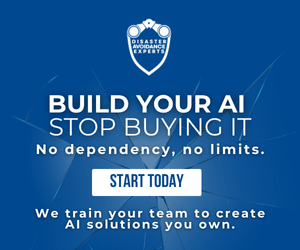- Teamship emphasizes collective responsibility and mutual accountability, replacing traditional hierarchical leadership.
- Research shows that adopting teamship practices such as co-elevation can significantly increase collaboration.
- Teamship encourages a “challenge” culture that empowers team members to hold each other accountable for collective success.
What if the key to organizational success isn’t a single leader, but a team working together with shared accountability? As traditional hierarchies crumble, a new approach called “teamship” is emerging — could it be the future of leadership?
As the nature of work rapidly transforms, organizations are reimagining how to lead teams to achieve peak performance. Research involving over 3,000 teams reveals that only 15% of teams achieve co-elevation — a state where members commit to mutual accountability, leading to optimal collaboration and performance.
This mutual collaboration and accountability is often referred to as teamship — a revolutionary concept that is redefining traditional leadership. Teamship prioritizes agility, resilience, and accountability, moving away from hierarchical structures with a single leader at the top.
Teamship creates an environment where every team member is empowered to contribute, lead, and support one another to attain co-elevation.
Could this approach to leadership be the blueprint for success in the modern workplace?
Teamship and the Co-elevation Approach to Leadership
Professional development has focused on individual performance for decades, yet most work happens within teams.
The traditional leadership model, in which a single person bears all the responsibility, is quickly becoming outdated. In its place, a more distributed leadership model is emerging, where every team member plays a role in driving success.
This approach encourages stronger collaboration and enables teams to leverage diverse skills and insights, leading to more effective decision-making and improved performance.
Teamship is a collaborative approach to leadership and team dynamics that replaces traditional hierarchical models with collective responsibility, shared goals, and mutual accountability. This approach has become a cornerstone of success in modern organizations, empowering teams to thrive together rather than relying on a single leader.
In teamship, leadership is distributed among team members as each contributes their strengths and takes responsibility for their individual performances, in addition to the overall success of the entire team.
Creating an environment where team members feel empowered to share ideas and hold each other accountable is essential for success.
Sir Clive Woodward led England to victory in the 2003 Rugby World Cup and as a business consultant is now a strong advocate for teamship. Woodward argues that creating an environment where team members feel empowered to share ideas and hold each other accountable is essential for success.
His leadership style, shaped by his experiences as a player and coach, has been applied to sporting and business teams. Woodward emphasizes the importance of collaboratively developing standards that ensure each member is fully invested in the team’s overall performance.
In a Future Ready Leadership podcast with Jacob Morgan, Keith Ferrazzi breaks down the concept of teamship, emphasizing that leaders must embrace co-elevation — where all members commit to mutual success. Ferrazzi, Founder and CEO of Ferrazzi Greenlight, champions teamship in his latest book, Never Lead Alone.
Ferrazzi advocates for strategies like creating a challenge culture for accountability, conducting open 360-degree feedback for transparency, and performing energy checks to maintain team motivation.
The 3 Steps to Superior Teamship
Ferrazzi emphasizes the importance of shared leadership and collective responsibility within teams. In the podcast, he outlines a practical framework for team success, based on three steps that drive effective collaboration and accountability:
1.Building the RAP (Relationship Action Plans) Around Strategy and KPIs
The first step is to set clear, strategic goals through regular quarterly planning. Teams come together to identify the “five big hills” they aim to climb — key challenges or objectives that the team must overcome to succeed.
Whether these are identified by the team or leadership, this collaborative decision-making process is essential to aligning the team with the overall strategy.
2.Identifying the Right Team Members
The next step involves selecting the most suitable individuals to tackle the identified challenges.
This often means narrowing the team to a core group of 8–10 people whose skills and expertise are vital for achieving the goals. Ferrazzi also stresses the importance of monthly “stress tests” — regular check-ins where team members candidly discuss their struggles, progress, and future direction.
These ensure alignment and help maintain momentum.
3.Energy Checks for Emotional Alignment
The third step focuses on the emotional wellbeing and engagement of the team. Energy checks are simple but powerful exercises where team members rate their emotional state on a scale from 1 to 5.
This activity helps leaders assess the team’s overall health and identify any areas of concern. Ensuring that every member feels supported and that everyone has each other’s backs is key to maintaining motivation and commitment.
Introducing Challenge Culture within Teams
Ferrazzi also advocates for challenge culture as a fundamental element of successful teamship. In contrast to traditional leadership models, which rely on formal meetings and rigid authority, challenge culture encourages rapid idea exchange, where team members actively contribute, provide constructive feedback, and hold each other accountable.
Ferrazzi emphasizes that leadership is shared in a challenge culture, and every team member is involved in decision-making. A key practice in this model is the Open 360 review, where team members provide candid, respectful feedback to one another, unlike conventional 360 reviews that are typically supervisor-driven.
This practice promotes continuous growth by ensuring everyone assumes responsibility for both giving and receiving feedback.
Another cornerstone of challenge culture is the social contract — a set of mutually agreed values that guide team interactions.
By promoting openness and accountability, teams can avoid the nice culture trap, where difficult conversations are avoided in favor of maintaining harmony. Developing resilience and managing disagreements without offense is critical to building effective teamship.
A great leader does not simply offer feedback — they empower team members to provide it to one another. Leadership, Ferrazzi argues, is about engaging diverse insights, not pleasing everyone.
The Business Case for Teamship
Ferrazzi’s research with over 3,000 teams shows that traditional leadership methods lose out on billions in shareholder value. He argues that focusing on a collective effort rather than individual roles can reverse this trend and enable teams to achieve peak performance together.
Co-elevation, which drives collective success, is gaining traction across industries. Companies such as IBM, Comcast, iHeartMedia, PG&E, Dropbox, Cisco, e.l.f. Beauty, and Salesforce have already adopted new team behaviors and modern digital tools to achieve breakthrough results.
Co-elevation can be reinforced through daily practices that facilitate peer-to-peer accountability and continuous growth, such as “Stress Testing,” “Sprints,” and “Sprint Reviews.”
Teams that embrace co-elevation experience dramatic improvements: a 79% increase in honest and open communication (candor), a 46% increase in collaboration, and 44% more accountability.
Ferrazzi argues that organizational transformation requires reimagining teamwork by combining new behavioral commitments with modern collaborative tools.
Even in hybrid and remote environments, collaboration does not diminish when leaders apply teamship principles and utilize technology to support dispersed teams.
This aligns with insights shared by Nirit Cohen in her appearance on the Allwork.Space Future of Work Podcast. Cohen emphasizes the importance of assigning the best-suited individuals to accomplish designated tasks, using the appropriate tools, regardless of location or traditional work hours.
Sustaining Impactful Teams
While the concept of teams has existed for millennia, formed around the belief that collective efforts lead to superior outcomes, many organizations still struggle to create environments that promote cohesive teamwork.
Research on high-performing teams reveals common traits, such as pursuing bold goals, embracing distributed leadership, and leveraging modern tools to achieve co-elevation.
Ultimately, true success hinges on the quality of teamship — collaboration, accountability, and mutual support within teams.
Organizations that prioritize these elements will unlock their teams’ full potential and achieve the success they seek.


 Dr. Gleb Tsipursky – The Office Whisperer
Dr. Gleb Tsipursky – The Office Whisperer Nirit Cohen – WorkFutures
Nirit Cohen – WorkFutures Angela Howard – Culture Expert
Angela Howard – Culture Expert Drew Jones – Design & Innovation
Drew Jones – Design & Innovation Jonathan Price – CRE & Flex Expert
Jonathan Price – CRE & Flex Expert













